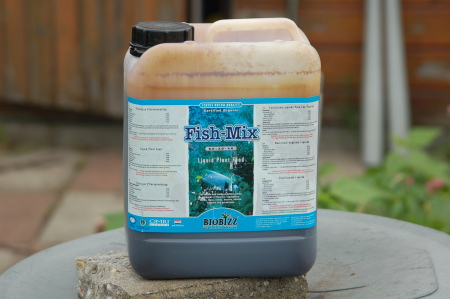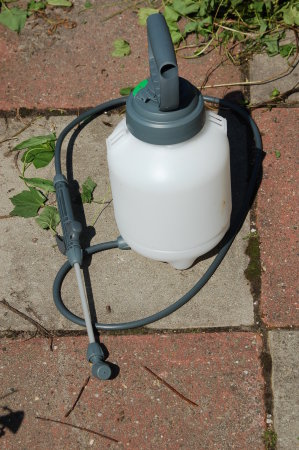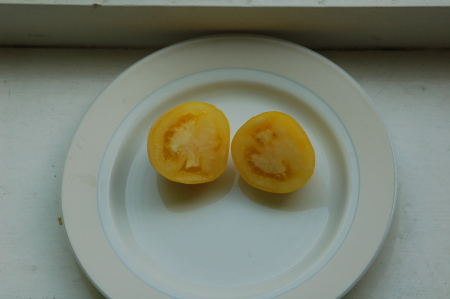
Fish mix, or fish emulsion, is a type of organic fertilizer. There are a number of other fertilizers on the market like kelp mix and others, which are probably very similar in nature and quality as fish mix.
In several previous posts I mentioned using fertilizer in your garden is generally not a good idea. The only time you should use fertilizer is if you know for some reason you have a specific problem that needs to be addressed, for example you have had your soil tested. It happens often that someone asks me about a problem in their garden, that in the end turns out to be because they used fresh manure or too much fertilizer.
Often gardeners wind up using fertilizer in their gardens because they buy and use it once. For example, they are growing tomatoes and come across a box of tomato fertilizer on the shelf of the garden center. After this, they have no idea if the fertilizer helped or not, but figure they should just keep using it because after all it can’t hurt, right? It’s really easy after a few years of adding fertilizer because you are afraid not to, to find yourself with too much fertilizer in your garden that you can’t easily get rid of.
It’s not the purpose of this post to recommend that you go out and use fish mix! If your garden doesn’t need it, it won’t help in any way and it’s best avoided. I generally take the view that it’s best to avoid all unnecessary inputs into your garden.
In the last few weeks I’ve been using fish mix in my garden, because I did a soil test a few months ago that showed my soil was low on nitrogen and I noticed several plants were showing signs of nitrogen deficiency. I view this as a temporary measure until I have a chance to use other methods to improve my nitrogen levels.
Not Too Strong
One of the nice things about this kind of fertilizer is it’s not too strong. It’s very unlikely to burn the roots of your plants or cause much other damage, as long as you use moderation and common sense. As most of you are familiar with, chemical fertilizer often comes with an NPK rating like 10-5-10, that tells you what the composition of the fertilizer is. In the case of fish mix, it has an NPK rating of about 1-1-1.
Because it’s not too strong, it’s reasonably well suited to just being used at will. It’s not very critical what time of the year you apply it, and as long as you don’t use it more than about once a week you probably won’t over-fertilize your plants. Again, with common sense, in all it’s a pretty foolproof fertilizer.
Stronger fertilizers typically have to be applied according to specific label instructions, at specific times of the year.
Foliar Feeding
It’s most commonly applied to the garden with a spray bottle, after being diluted significantly with water. In this way, you can walk around the garden and spray some on those plants you want to fertilize. You can also use an ordinary watering can instead of a spray bottle. I normally use a ratio of a few tablespoons fish mix per liter of water.
Many plants can absorb food through their leaves, for example tomatoes and related plants, garlic and onions. Other plants as well. Plants that do this can absorb fish mix through their leaves very quickly, often within minutes, and it can be a very effective way to fertilize them,
Caveats
It’s suitable for outdoor use only!
This product is liquefied fish, and nothing else. Probably not the nicest parts of the fish at that. It stinks, and it’s very difficult to get the smell off your hands or clothing. You will have the attention of your cats when you are done working in the garden.
This product attracts flies.
Don’t use it too close to harvest, because it can give your fruits and vegetables a fishy taste.
It’s kind of expensive. For 5 liters I paid about €35. Although 5 liters will probably last more than a year, maybe even two years, and I have a big garden.





